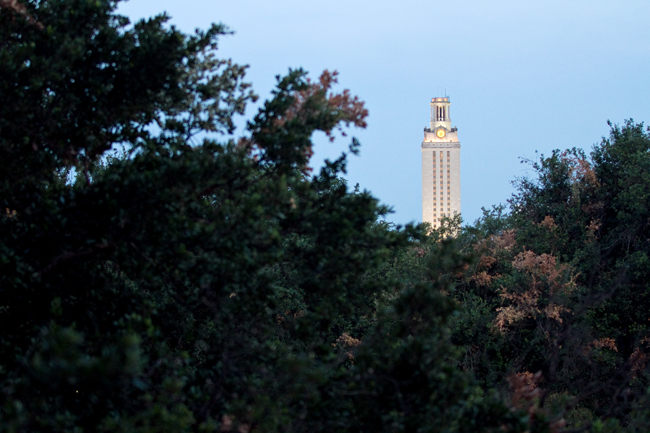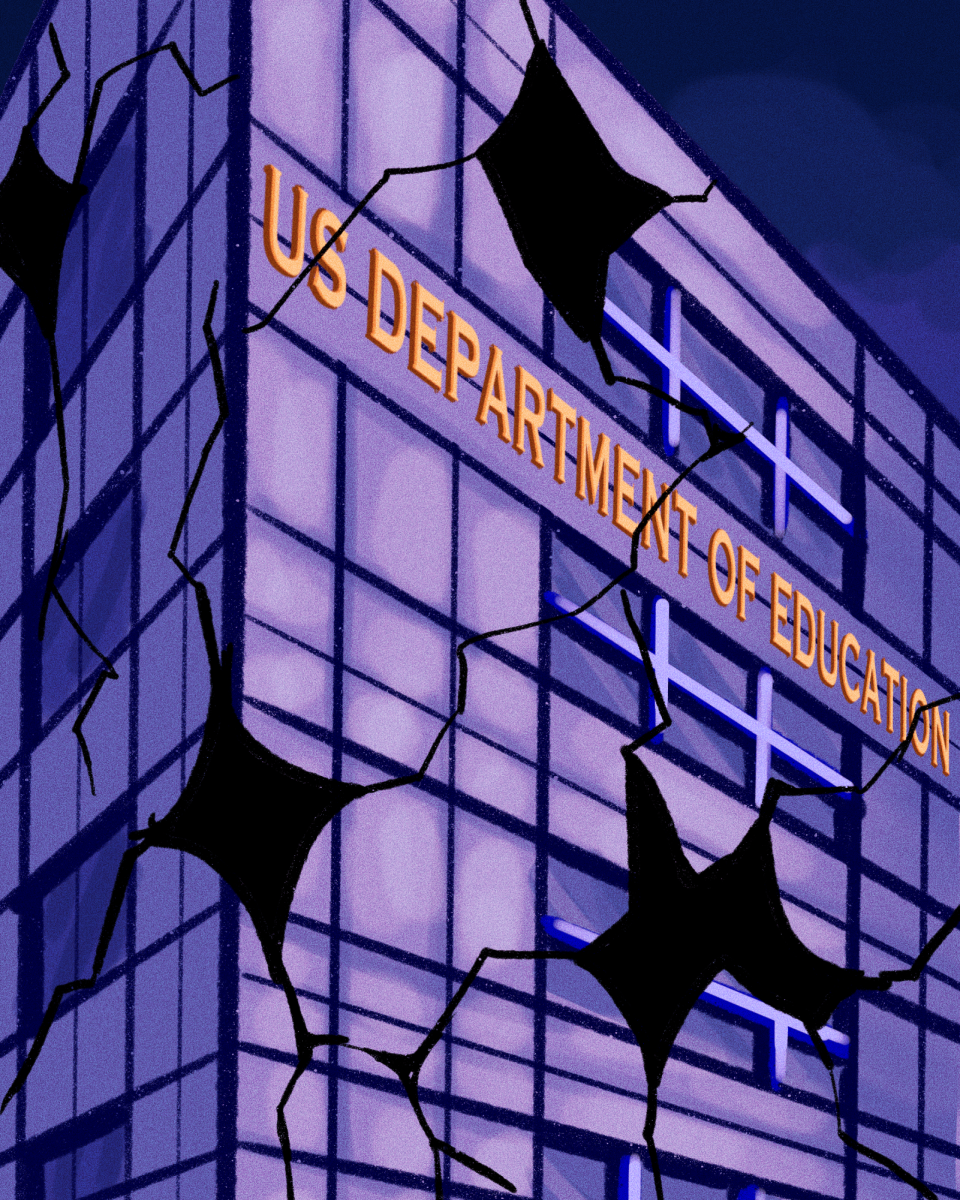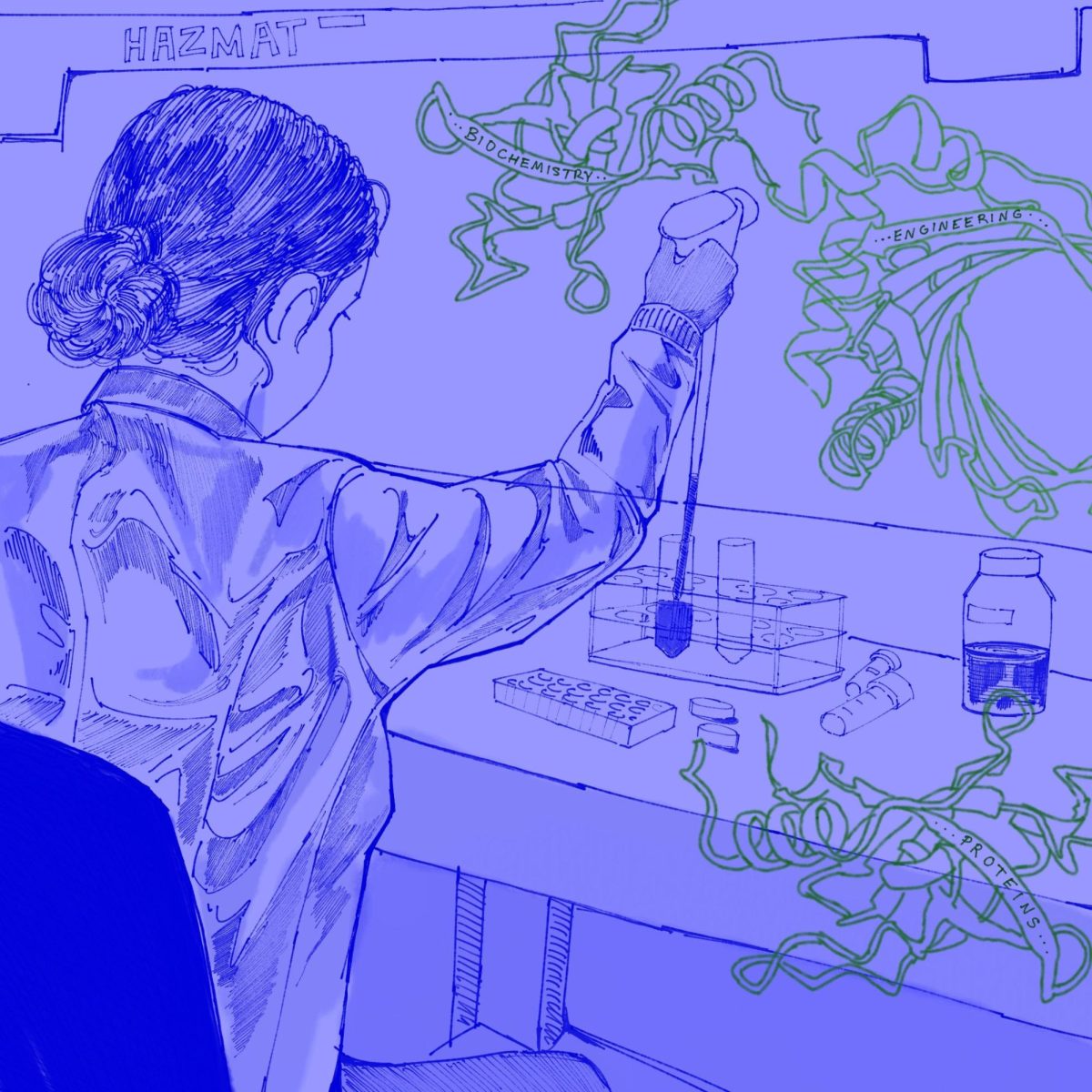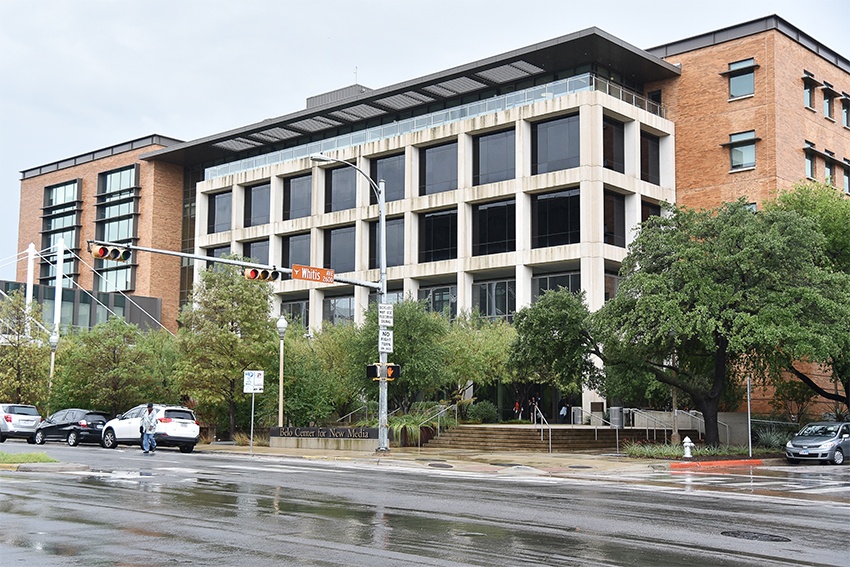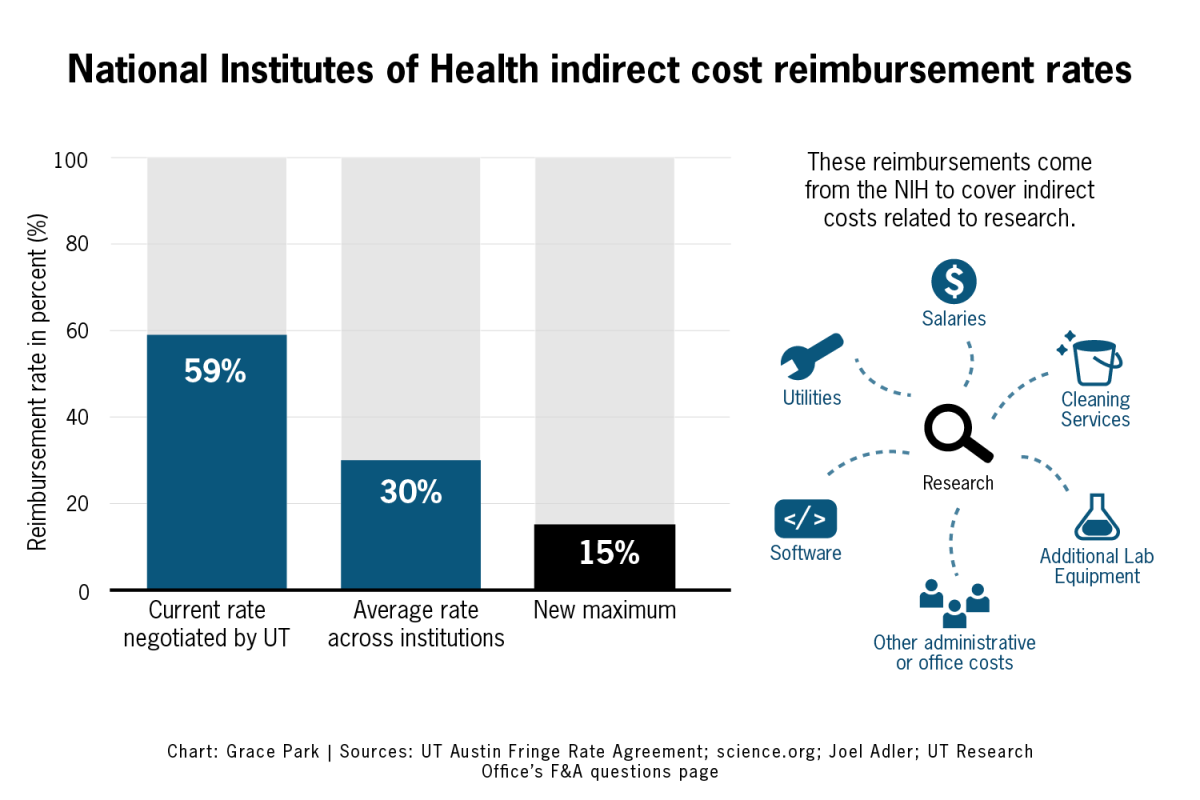Shading students while they wait at the crosswalk and even housing the famed albino squirrel are roughly 4,700 trees with different stories to tell – and UT is working to document and measure every last one.
UT’s Facilities Services department is working on cataloging the trees on campus this summer to better understand how to care for them and learn more about their history. Documenting the trees has not only givesn landscapers better knowledge of how to maintain a tree, but it has also come with surprises and entertaining stories. Twenty-five stories will be documented online. These 25 will eventually make up a walking tree tour beginning in the spring of 2014.
UT arborist James Carse, who is part of the team that will be documenting the trees, said the trees were last cataloged in 2007, but many have been removed, relocated or planted since then. He said this new effort is also focusing more on historical significance.
Some tree history has already made it into campus tours. The Battle Oaks, which surround a statue of Barbara Jordan, are three connected live oaks that are said to be the only three left standing on what would later be the Forty Acres from when a hill of oaks were destroyed to fortify the Texas Capitol during the Civil War. Years later in 1923, Professor William Battle is said to have protected the trees from construction, shotgun in hand.
“They call the 1930’s the Live Oak Era, when Calhoun and Professor Battle were involved in not only planting, but were real outspoken and fought for the protection and preservation of the trees on campus,” Carse said.
Carse said this early push for preservation set the standard that continues today. Trees play an important role in UT’s environmental and social ecosystems by providing shade, clean air and bringing people together under their leaves.
Every year, the University spends thousands of dollars caring for its trees, valued at more than $25 million. But caring for more than 50 species of trees is not easy. UT employs a special team of six to battle ongoing campus construction, damage from wild animals and the Texas drought.
The team operates from a $2.5 million allotted landscape budget, which pays the salaries of 71 landscapers, and not all the funds go to trees. Landscapers keep trees healthy by pruning and revitalizing the soil.
“It’s our duty, not only mine but the people at UT, to do right by the trees because it’s been proven they add such an environmental benefit,” Carse said.
UT arboritst James Carse is a member of the team cataloging the campus' trees to gain more knowledge of their history and learn how to preserve them. (Photo Credit: Emily Ng)
Tree People
English professor Jerome Bump said the historic trees are living monuments to previous generations and notable members of the University.
“The live oaks are especially valuable on this campus,” Bump said. “They can live much longer than any individual human and have embodied the memories of many on campus, including Battle who lived up to his name in defense of them.”
Bump said a few bald cypresses along Waller Creek particularly capture the past.
“There is a bench there in memory of professors Joe Jones and Sam Ellison, the spirits of Waller Creek, on the spot where they, and sometimes I, used to eat lunch,” Bump said. “That tree especially seemed to watch over and protect us. Now it houses their memories, and I hope some day it will embody mine as well.”
Jones and Ellison were English and geological sciences professors. Bump said he often holds class out of a lecture hall under the trees next to the creek.
“One class met there for an entire semester,” Bump said. “They provide sufficient relief from the heat for people to gather under them, even in the summer.”
Not all trees with historic tales are as well-known or commemorated with a plaque.
“I learn something new every day,” Carse said “Many of the faculty have heard a story about this or that tree or know of a rare species and if they let us know we can better protect and maintain it, and make sure it is known if a project comes up around it.”
The data captured on any of the 4,700 trees currently being tagged can be accessed through UTree, an online tool that provides the tree type, height, diameter and landscape using the tree’s tag number. UTree is a partnership between Facilities, Division of Housing and Food Services and the Lady Bird Johnson Wildflower Center.
DHFS spokeswoman Laurie Mackey said the tool allows students and anyone else on campus the opportunity to learn about them and gives information on their environment.
Carse said the push for preservation on campus has allowed trees to flourish. But that growth has also had to overcome one furry obstacle — squirrels.
Squirrels

A fox squirrel chews on a live oak tree outside of Garrison Hall. Squirrels damage trees by habitually chewing on the newest and most productive parts of both young and old trees. (Photo Credit: Will Crites-Krumm)
“They do so much damage, we’re at the point where we are just throwing our hands up,” Carse said. “I’ve never seen this kind of squirrel problem anywhere and really it’s because everything comes together – we have water and we have a constant food source for these things.”
The fox squirrels roam from tree to tree on campus and chew on parts of young trees and fresh growth on older trees. These are some of the most important parts of trees, since they give trees the most nutrients.
According to Texas Parks and Wildlife, the squirrels can breed twice a year with a litter of two or three, typically born in February and July. Live oak, which make up 60 percent of the trees on campus, is a natural home for fox squirrels and provides for their basic needs, even without the dietary supplement from on-campus dining halls. However, Carse said hand-feeding and trash adds to the problem because it only spurs the growing population.
“Please don’t feed these wild animals,” Carse said. “I guess not everybody knows. They become dependent and you’re actually doing an injustice to them in the long run. The squirrels get all they need from the student population, and from the union.”
Texas state law classifies the campus squirrels as small game. Carse said if the squirels are trapped, they are required to be utilized or killed, meaning UT officials can’t kill, trap or poison to control the population.
“Our hands are tied because we can’t trap. We can’t kill. We can’t poison, because we have to be so open with what we do,” Carse said. “What we’ve resorted to now is some scent like white pepper and cayenne pepper that is supposed to deter them. They’ll get it on them and won’t come back to the same spot. But it doesn’t work that well. Once it rains or irrigates a lot of that dissipates. It doesn’t do its job.”
Keeping Trees Alive

Many trees on UT's campus are tagged as part of the cataloging process that the Facilities Services department is executing. (Photo Credit: Erika Rich)
Aside from defending against squirrel damage, Carse said he and his team combat continual problems caused by climate, foot traffic and construction.
“Our biggest problem is drought and tree preservation on construction sites,” Carse said. “We’re very lucky with our irrigation system and to have as much [water] as we have. With the overuse of some of our sites on campus like the South Mall, any corner that you’d come to, you’ll see the cattle trails where the grass it just worn out; well, there’s roots under there. If you compact the soil enough the water is not getting to the tree.”
Landscape’s $2.5 million annual budget, including salary and operating costs, helps support tree maintenance, although the outnumbered staff often contracts pruning and removal projects through the University’s Renovation and Renewal program.
Though maintenance alone can be challenging, new building projects and renovations can add to root loss or even cause a tree’s removal or relocation.
“On some new construction projects, the landscape design plans we see are heavy on plant material,” Carse said. “They come in and don’t plant trees properly or too close together. A mature tree needs two things: the space to grow for its canopy and the space for its roots. If you plant a tree on a restricted area like that you’re setting up for failure.”
The conflict between expanding construction and tree preservation has been long present on campus. The live oak trees that once stood where the Darrel K Royal – Memorial Stadium is now located were torn down in 1969 to expand the stadium. Students fought to save the live oaks, even chaining themselves to the trees.
Today’s trees are considered a priority for new building sites, though, not every one can keep its place. The effort to relocate these trees has saved many, but it takes its toll on the trees.
“With transplants you have to go in and harvest the root ball,” Carse said. “You lose a huge percentage of roots that go out furthest from the tree up-taking most of the water. When you cut those roots you shock the tree.”
Some trees relocated and brought to campus have thrived despite these struggles, including a Himalayan deodar cedar planted in front of Littlefield House, which is a state champion in size. Others like a sixth generation descendent of the apple tree that inspired Isaac Newton, have not faired as well.
“It’s not easy to keep an apple tree alive here that is used to our weather and squirrels, but we’re doing our best,” Carse said.
The tree is expected to be planted near the Gates Dell Complex in the coming months.
Carse said the benefits caused naturally by any of the historic or ordinary trees can impact students the most, but tend go unnoticed.
“We want to protect that history, along with everything else they provide for us," Carse said. "They not only make the campus look nice, but give us shade to be outside and benefit us. It’s kind of crazy how many things impact trees and how many ways the trees impact us."
Follow Christine Ayala on Twitter @christine_ayala.
Editor's note: A shorter version of this article ran in print on Monday, June 15.

